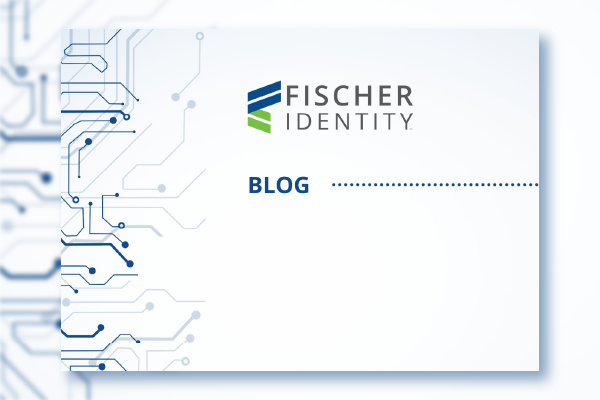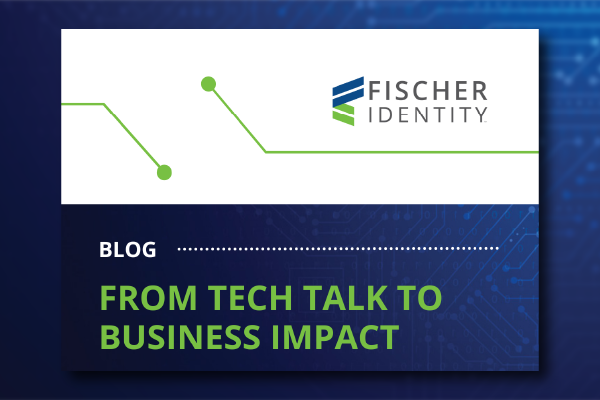In this third blog from our “Making Sense of the Latest IGA Guidance” series, we show how seamless integration across hybrid environments is foundational for secure, efficient, and scalable identity governance.
For years, industry analysts have described integration as one of the biggest challenges in Identity Governance and Administration (IGA).
They’re not wrong, for most vendors.
But at Fischer Identity, integration isn’t an obstacle. It’s our foundation.
The Industry’s Integration Illusion
Analyst reports continue to frame IGA integration as an emerging capability, something vendors are still “working toward” or “expanding over time.” The problem with that perspective is simple: organizations can’t afford to wait.
In a world where identity data lives across HR, ERP, CRM, SIS, Active Directory, and countless cloud platforms, seamless integration isn’t a “nice to have.” It’s table stakes for business continuity, security, and compliance.
And yet, many solutions on the market still rely on brittle custom code, connectors that break during upgrades, and professional services teams to bridge the gaps.
That’s not sustainable governance, that’s managed complexity.
At Fischer, Integration Is a Solved Problem
Fischer Identity was built on the belief that integration should be simple, scalable, and sustainable.
That’s why every Fischer deployment starts with prebuilt, fully supported, and configuration only connectors for the enterprise systems that matter most.
- 100+ native integrations supporting Workday, SAP, Oracle, PeopleSoft, Banner, ADP, Salesforce, ServiceNow, Azure AD, and more.
- Realtime synchronization across cloud, on-prem, and hybrid environments, no data lag, no manual refreshes.
- No custom coding required, changes are made through configuration, not scripts.
- Single identity fabric that unifies access, provisioning, and governance across all systems.
In short, Fischer has already achieved what others describe as “the future of IGA connectivity.”
True Hybrid Identity, One Platform, Full Parity
While other vendors separate their cloud and on-prem offerings into different products or architectures, Fischer maintains a single, unified code base across all deployment models.
That means whether your environment is entirely cloud based, fully on premises, or somewhere in between, you get:
- The same features and capabilities
- The same administrative control
- The same configuration interface
- The same security posture
No compromises. No retraining. No “cloud edition” limitations.
This is what true hybrid identity governance looks like.
Speed and Predictability Built In
One of the biggest benefits of Fischer’s integration model is time, time saved in deployment, testing, and long-term maintenance.
- 6 to 9-month implementations, not multiyear projects.
- Fixed fee pricing, ensuring predictable budgets.
- No code drift; upgrades are seamless because integrations are configuration based, not custom built.
- 24/7 customer advocacy to ensure performance, scalability, and continuous optimization.
Every integration is standardized, yet adaptable, supporting each organization’s business processes without reinventing the wheel.
What Integration Really Means to Executives
For leaders, “integration” isn’t just a technical discussion. It’s about alignment, making sure technology supports strategic goals rather than complicating them.
When integration works:
- Data moves seamlessly across systems, driving accurate decision making.
- Compliance reporting becomes automatic, not reactive.
- New applications can be onboarded in hours, not months.
- IAM teams can focus on governance outcomes, not troubleshooting.
Fischer Identity empowers organizations to achieve exactly that, integration as an enabler, not a dependency.
The Fischer Identity Difference
Fischer’s architecture was purpose built for interoperability and scalability. It’s why our customers across higher education, healthcare, government, and enterprise trust Fischer to manage more than 15 million identities globally.
With Fischer, integration is never a project phase. It’s the product.
While analysts continue to highlight integration as an industry “challenge,” Fischer Identity customers have long since moved past that stage.
Because when your IGA platform is designed for configuration, built for interoperability, and proven at scale, integration isn’t a hurdle.
It’s a hallmark of maturity.
Catch up on the “Making Sense of the Latest IGA Guidance” series, helping leaders focus on what really matters in identity governance and turn insight into action:

